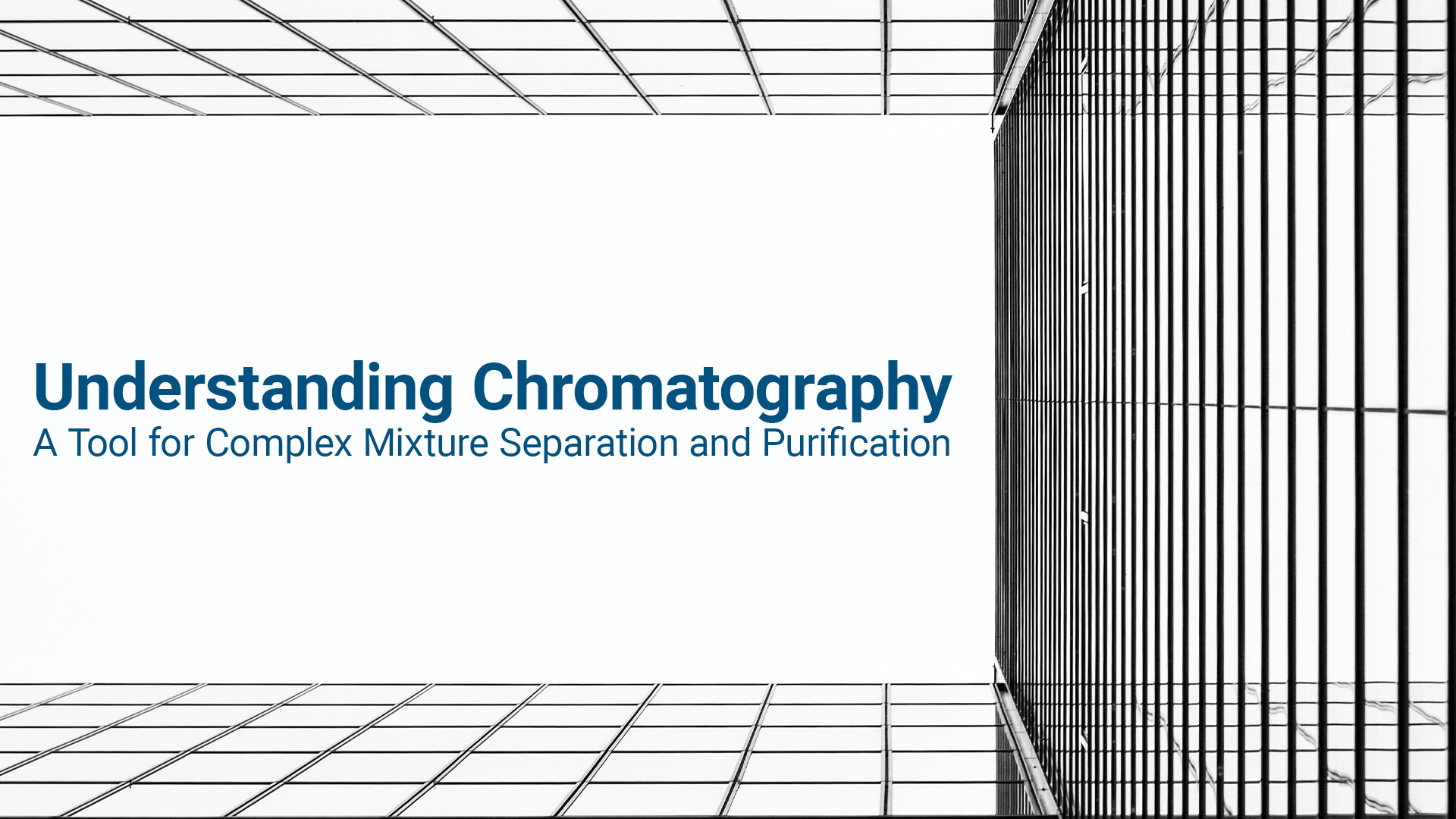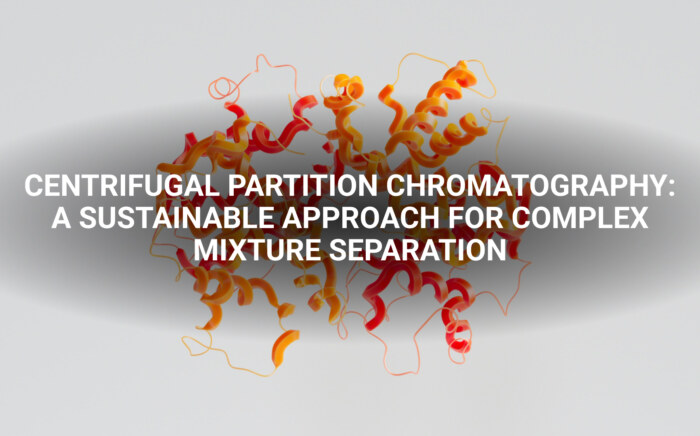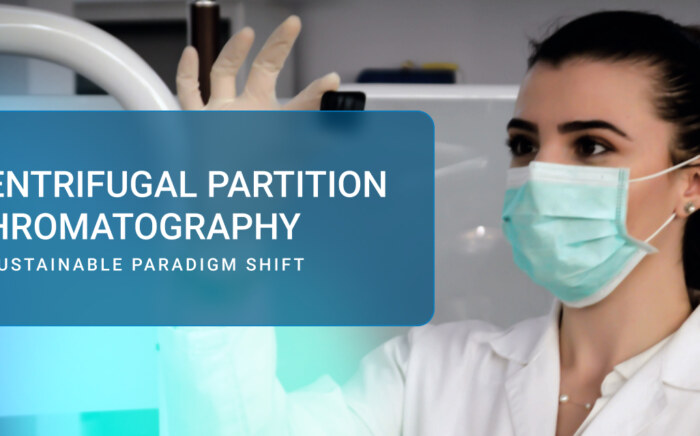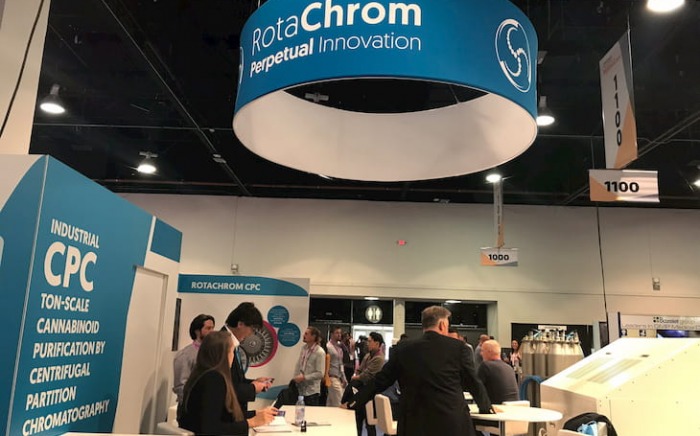Increasing separation efficiency by pH adjustment in Centrifugal Partition Chromatography
NewsChromatography stands as a widely embraced technique in the field of science for effectively separating and purifying complex mixtures. Within this realm, Centrifugal Partition Chromatography (CPC) stands out as a unique chromatographic approach, utilizing liquid-liquid partitioning to achieve separation. A fundamental aspect of CPC lies in the reliance on the solutes’ liquid-liquid partition coefficient (Kd), representing the ratio of solute concentration in the stationary phase to that in the mobile phase.
Understanding the Partition Coefficient
The separation process in CPC is grounded in the differing partition coefficients of the sample components between the mobile and stationary phases. The partition coefficient (Kd) functions as an equilibrium constant describing the distribution of a compound in a two-phase system. For a specific Compound of Interest (CoI), this coefficient is the ratio of its concentration in the stationary phase to that in the mobile phase.
The partition coefficient (Kd) governs the duration each compound spends in the mobile and stationary phases, alongside the pace at which they traverse the system. By carefully selecting the stationary and mobile phases, and adjusting operational parameters like flow rate and column length, CPC achieves precise and efficient separation of complex mixtures.
Harnessing the Power of the Partition Coefficient
Centrifugal Partition Chromatography (CPC) stands as a unique and innovative chromatographic technique, offering distinct advantages over traditional methods. CPC replaces conventional chromatographic columns with interconnected cells filled with the liquid stationary phase. These cells, affixed to a robust rotor, undergo immobilization via strong centrifugal force. The mobile phase, housing the sample to be purified, enters the rotor under pressure and is pumped through the stationary phase as tiny droplets, allowing for efficient separation.
A notable divergence between CPC and other chromatographic methods, such as High-Performance Liquid Chromatography (HPLC), is the absence of a solid silica-based stationary phase in CPC. Unlike HPLC, which employs a stationary phase typically consisting of an organic moiety bonded to a solid silica support, CPC eliminates the need for silica gel due to the gravitational force during centrifugation. This distinctive CPC approach ensures high efficiency and rapid separation of complex mixtures without relying on solid supports.
CPC’s versatility is further enhanced by its capability to operate in ascending or descending mode, regulated by a valve directing liquid flow in two directions. This adaptability allows for efficient separation of a wide array of compounds with varying partition coefficients. The success of a separation in CPC is often evaluated using the resolution factor (Rs), indicating the extent of separation between adjacent peaks in the chromatogram.
Resolution and Beyond
A resolution factor (Rs) value of 1.5 or higher is sought after, denoting well-separated adjacent peaks with a clear baseline. Conversely, an Rs value below 1.5 implies some peak overlap, potentially compromising purity. Achieving an Rs value above 1.5 is considered an ideal scenario, signifying significant spacing between peaks and an exceptionally efficient and pure separation.
Additionally, the discrepancy in stationary phase volume between HPLC and CPC plays a pivotal role in distinguishing the two techniques. HPLC employs a solid column packed with the stationary phase, whereas CPC distributes the liquid stationary phase across interconnected cells in the rotor. This variance allows CPC to achieve efficient separation with fewer theoretical plates compared to HPLC, making it a highly efficient and cost-effective preparative chromatography technique.
In conclusion, CPC presents a novel and advantageous chromatographic approach, showcasing benefits like the absence of solid stationary phases, high separation efficiency, and operational flexibility. Its ability to achieve precise and pure separation of complex mixtures has garnered significant attention across various industries, including pharmaceuticals, natural products, and food and beverages. RotaChrom, a leading innovator in chromatographic solutions, has propelled this field further with its state-of-the-art CPC technology, providing industrial-scale solutions for the high-quality purification of valuable compounds.
RotaChrom: Advancing Chromatographic Solutions
RotaChrom, a pioneer in chromatographic solutions, has developed an industrial-scale CPC system that excels in yield, purity, and cost-effectiveness. RotaChrom’s CPC technology operates on a liquid-liquid principle, eliminating the need for solid stationary phases, and relies solely on solutes’ partition coefficients for separation. This unique methodology enables efficient and high-throughput purification of complex mixtures, with the added benefit of complete sample recovery due to the absence of irreversible adsorption. RotaChrom’s CPC system stands as a versatile and potent tool for manufacturing high-quality active pharmaceutical ingredients (APIs), natural products, and other valuable compounds.



